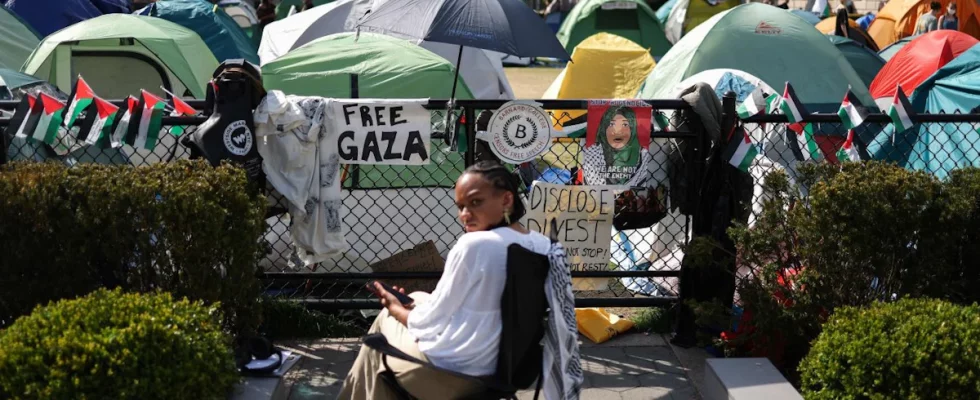What awaited the media stars in their glittering evening dresses and dark tuxedos in front of the Washington Hilton was anything but glamorous. They had come to bask in the glow of guests including President Joe Biden and actress Scarlett Johansson at their annual gala dinner and celebrate press freedom.
First, however, the 2,700 journalists and guests were greeted by a loud demonstration on Saturday evening. “Shame on you,” the protesters shouted, “you are accomplices.” Accomplices in the war between Israel and Hamas, which has already cost the lives of more than 30,000 people in Gaza. Around 100 journalists were among the victims, and demonstrators wore press vests with blood painted on them.
Lost in the roar was what exactly the complicity of the media is supposed to be, which has been reporting non-stop about the bloody conflict and victims in both Israel and the Palestinian territories since Hamas’ terrorist attack on October 7, 2023. Also about the killed media workers, who were mentioned during the official speech at the gala dinner.
Conflicts also occur in smaller university towns
The contradictions that are now affecting the entire country became apparent on a small scale. After Columbia University in New York had a protest camp broken up with police violence, tent camps were also set up at several dozen universities. The school authorities ordered the police to evacuate several of them. According to a count by the, around 900 people were killed by the weekend Washington Post arrested, no longer just in the metropolises on the east and west coasts, but also in smaller university towns in rural areas, such as Bloomington in Indiana or Blacksburg in Virginia.
Protests and counter-reactions have escalated because anti-Semitic slogans could be seen and heard during the demonstrations, including open support for the terrorist group Hamas. Some student and professor representatives tried to blame these excesses on outsiders until it became clear that organizers had also made anti-Semitic comments. So far, however, the exception has been conflicts such as those in Los Angeles, where there were scuffles over the weekend.
The protesters are no longer just concerned with the war in Gaza and American Middle East policy. Rather, the debate now also revolves around the right to freedom of expression and academic freedom. Demonstrators are demanding an amnesty for those arrested in recent days, who were suspended from classes and in some cases charged with trespassing.
Cracks in the Democrats
The conflict is fueled by tough political disputes in Congress. Republicans in particular accuse universities of tolerating anti-Semitic ideas; Last December, the presidents of Harvard and the University of Pennsylvania were forced to resign after a hearing. At Columbia University last week, President Minouche Shafik’s hearing and a visit to campus by Speaker Mike Johnson helped heat the mood. This week, Congress will take up the issue again: a bill will be voted on that would require the Education Department to use a broader definition of anti-Semitism to better legally protect Jewish students.
While the Republicans appear united, deep cracks are opening up among the Democrats. The majority of the progressive wing supports the demonstrators. Ilhan Omar, for example, a prominent MP with Somali roots, supported the protests of her daughter, who was arrested in New York. The centrist wing, on the other hand, supports President Joe Biden, who pursues clearly pro-Israel policies. Fears are now being raised within the party that Biden’s coalition of voters is increasingly falling apart, which could cost him re-election in November.
The Democrats are also worried that the party conference in Chicago in mid-August could be overshadowed by riots. The organizers of a demonstration expect 30,000 participants, three times more than in 1968, when protests against the Vietnam War shook the party conference, also in Chicago. Back then, the mood in the country was more heated than it is now, and it is not yet clear how realistic the expectation of 30,000 demonstrators next August really is. The last days of classes are currently taking place at universities; It is not yet possible to estimate whether the long summer break will weaken the protests.

